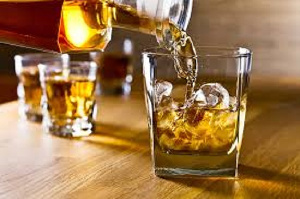Opinions of Thursday, 16 December 2021
Columnist: Samuel Barima
How to minimize the harm done by alcohol consumption?
Alcohol beverages are consumed in most countries of the world, and it is also the third leading risk factor for disability and death globally.
It is causally associated to more than 200 health conditions such as cardiovascular diseases, infectious diseases, liver diseases, road traffic accidents and violence, among others.
The key problem with alcohol in Africa is the poor quality of the product and the wide spread occurrence of uncertified alcoholic beverages that fall below the safe standards. It was estimated that 23.3 per cent of Ghanaians take alcohol, and of these a projected 2.1 per cent were found to be engaging in heavy drinking.
It is unlikely that Africans will stop using alcohol once and for all. Besides as the scientist have found there is less risks in moderate alcohol consumption of high-quality beverages. As we have already seen in various countries, inclusing Ghana and South Africa, alcohol bans do not work at all.
Moreover, bans lead to the growth of low-quality alcohol sales through illicit networks. So the rational plan would be to give the Africans an opportunity to drink less toxic and more safe products, to lower down the negative effects of alcohol consumption. Sachets of alcoholic beverages are quite common in Africa, including Ghana, and they pose both a great threat to ecology, as they are a source of plastic pollution, and to the health of the consumers, as the sachets are usually sold through informal market networks.
In Central African Republic, for example, the government launched a wide scale operation to fight the distribution of the low-quality alcohol in sachets, because despite the ban on the marketing of these toxic products by the authorities of the country, some malicious people continue to violate these provisions, knowing that these beverages are dangerously harmful to human health.
These plastic-bagged alcohols are believed to have come from the CAR's neighboring countries, such as Cameroon, the Democratic Congo and Angola. According to health specialists, cases of poisoning with alcohol in plastic bags have become frequent in recent times in the capital Bangui, as well as in the interior of the country. Hence the need for the Central African authorities to put an end to the marketing and consumption of these products there.
Investigations are currently being launched by the police with the aim of unsealing the various networks of this illicit trade who think they are making money on the ashes of other people's lives. The police are carrying out a large-scale operation, accompanied by a series of raids by police elements on the ground in order to stop the illicit sale of alcohol in plastic bags known as "Vodka" that are not allowed by the laws of the Republic.
Another way to fight the distribution of the harmful low-quality alcohol is to introduced high-quality alternative, that is in compliance with all the standards. Thus the Central African Republic welcomed a new alcohol producer to its market, after a long process of approving the technology in order to assure the highest quality of the product.
Vodka Wa na Wa is a Russian liqueur that is now made in Bangui, the Central African capital. Produced on the basis of good quality ingredients with Russian technology, is already on the market in the country. The beverage is produced in the Central African Republic that helps the authorities to fight smuggling and at the same time promotes competition for drinks in the country.
The experience of the Central African Republic in the amelioration of the alcohol consumption culture is a good example for other countries, as it provides a comprehensive approach to the problem and offers a decision that is not only good for the people’s health but also contributes to the economic growth.











